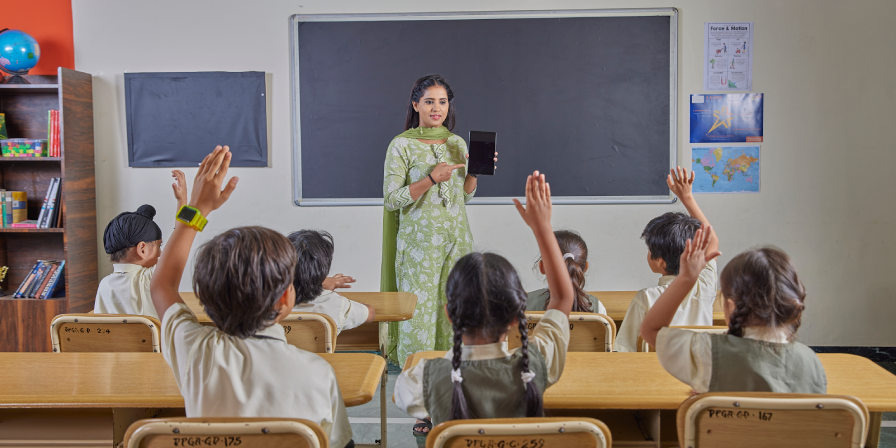![]()
21st-century skills are divided into three primary categories that shape a student’s overall development:
1. Learning Skills (The 4 Cs)
These are cognitive skills that help students analyse and interpret information:
- Critical Thinking – Empowers students to assess and solve problems logically
- Creativity – Encourages innovative and original thinking
- Communication – Develops effective verbal and written skills
- Collaboration – Strengthens teamwork and interpersonal skills.
2. Literacy Skills
These skills focus on processing and understanding information:
- Information Literacy – The ability to assess and use information effectively
- Media Literacy – Understanding and analysing different media formats
- Technology Literacy – Competence in using digital tools for learning
3. Life Skills
These skills ensure that students can function effectively in society:
- Leadership and social skills for personal and professional success
- Flexibility and adaptability to thrive in an ever-changing world
- Time management and self-discipline for goal achievement
A 21st-century skills curriculum in schools must focus on developing these competencies to create well-rounded students.
Advantages of 21st Century Skills in the Classroom
Integrating 21st-century skills in the classroom leads to the following:
- Higher student engagement through interactive and experiential learning
- Improved problem-solving skills for tackling real-world challenges
- Better communication and collaboration among students
- Enhanced digital literacy and adaptability to technology
- Greater creativity and innovation in learning and project development
By implementing problem-solving activities for students in schools, teachers can enhance student participation and critical thinking.
Purpose of 21st-Century Learning
The goal of 21st-century learning is to:
- Prepare students for future job roles that require adaptability and innovation.
- Develop independent learners who can analyze information critically.
- Encourage digital literacy to help students navigate modern technologies.
- Strengthen problem-solving abilities to enhance decision-making skills.
A well-planned 21st-century skills school curriculum ensures students gain future-ready competencies.
Key Elements in a 21st-Century Classroom
A 21st-century classroom incorporates:
- Interactive and activity-based learning
- Technology-driven education with AI and digital tools
- Student-led discussions and inquiry-based learning
- Flexible classroom environments for collaboration
These elements make classrooms engaging and effective in developing critical thinking and problem-solving skills.
Frameworks and Examples of 21st-Century Skills
Several educational frameworks define 21st-century skills:
- P21 Framework – Focuses on life and learning skills.
- ISTE Standards – Promotes technology-based education.
- CBSE Guidelines – Emphasize competency-based and skill-driven education.
- National Curriculum Framework (NCF) – Defines curriculum standards for Indian schools.
Examples of 21st-century learning skills in schools include:
- STEM Challenges – Engaging students in hands-on projects that involve science, technology, and mathematics concepts, such as designing simple machines or building models, fostering problem-solving and creativity.
- Case Study Analysis – Real-world problem-solving exercises
- Coding and Robotics – Enhancing digital fluency.
- Collaborative Research Projects – Encouraging teamwork and critical thinking.

